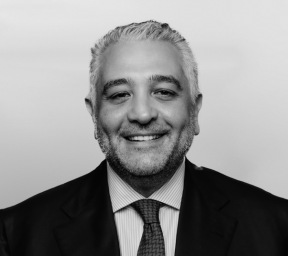More and more opportunities for the sale and recovery of non-performing loans (NPLs) are opening up across the Middle East as legal options increase, and third-party investors move into the market.
Drawing on the discussions from a Quantuma-hosted roundtable in London for lawyers and insolvency practitioners, Yaser Dajani looks at what markets and approaches offer the greatest potential and how banks and investors can capitalize.
Default rates soared across the Middle East in the wake of the global financial crisis and the Covid pandemic. Banks’ exposures included extensive lending to a dangerously inflated property market and high-risk businesses.
NPL rates
Source: World Bank
Kuwait saw its NPL to GDP ratio rise to more than 10%, though much of this debt has subsequently been written off. But the ratio in the United Arab Emirates (UAE) was still more than 6% at the end of 2022. By way of comparison, the UK’s NPL ratio is around 1%.
Relaxed lending
Why is the UAE’s NPL rate so high? Unlike the Gulf’s other economic giant, Saudi Arabia, where credit is governed by Sharia law and default rates are low, the UAE has permitted relaxed lending practices and a variety of non-Sharia facilities.
As home to a number of offshore financial centers, notably the Dubai International Financial Centre (DIFC) and Abu Dhabi Global Market (ADGM), the UAE has also become a major focus for international lending, which exasperates the problem when it comes to recoveries.
Accelerated recovery in UAE
But with the NPL exposures comes a significant market opportunity. In 2021, UAE’s NPL portfolio was valued at US$24 billion (AED 88 million).
It's not just the value of the NPL portfolio that makes the UAE especially significant. The UAE has also seen a wave of new regulations aimed at improving transparency and provisioning. Banks are open to make the sale of NPLs easier and more efficient in areas such as allowing the assignment of debt to a third-party. In relation to recovery, important steps forward include allowing creditors to take tangible security over a debtor's floating assets such as bank accounts, inventory and receivables.
Attracted by the size of the UAE market and the regulatory developments, third-party NPL portfolio investors and funders are now moving in at pace. One of the big advantages of passing debt to specialists through an NPL sale is that banks can monetize at least some of the portfolio without the need to cover the recovery costs.
Banks have powerful incentives to aggressively offload these NPLs and clean up their balance sheets. The results would bolster their credit ratings, reduce capital requirements and ultimately, boost their profitability.
Although there were a few successful NPL sales in recent times, it is a very difficult prospect. And while everyone in the industry is talking about NPLs, there are in fact very few firms (legal and consulting) who have managed to design a methodology that works. The majority of NPLs are toxic, meaning the loans are not secured. The trick is to find a way to “monetize” the debt, creatively and stratetically and that often requires a global asset recovery plan.
Recent experience suggests that around 50% or more of UAE debt could be monetized. Banks and their shareholders need to accept that local recovery is not possible. They must partner with experts who understand how to utilize global remedies to make recovery possible.
Saudi Arabia seeks to combat dissipation
The NPL rate in Saudi Arabia is a fraction of the UAE. The Ijarah structure establishes a lessor-lessee, rather than a creditor-debtor, relationship. This means lending is secured against an asset (equity, land, properties, etc.).
But Saudi Arabia does face a problem with the dissipation of recoverable assets to jurisdictions outside Saudi Arabia far away from the reach of trustees and liquidators, especially in relation to lending to foreign companies. For example, the owner of a property put up as collateral might seek to avoid return by passing the title to a family member or concealing ownership through a complex entity structure.
To help strengthen recovery, Saudi Arabia has signed up to the United Nations Commission on International Trade Law (UNCRITAL) cross-border enforcement protocols. Bankruptcy trustees appointed by Saudi courts are working with seasoned asset recovery specialists to take the fight where the assets are located, most of the time hidden in complex structures and usually in offshore jurisdictions.
Tenacity, innovation and expertise
But this remains a challenging NPL market. If we look at the UAE, part of the recent successes stems from the fact that the loans were secured against recoverable collateral. However, a large proportion of the UAE’s other NPLs are backed by what are in effect worthless personal guarantees, rather than assets.
Nonetheless, as we’ve seen first-hand, the openings are there for banks, investors, and advisers who are able to bring the right combination of tenacity, innovation, and expertise to bear.
International legal remedies form an important part of the way forward. Lenders can pursue recovery through offshore courts.. Landmark cases include Emirates National Bank of Dubai’s (NBD) successful request to a UK court to recognize a UAE judgement for enforcement in the UK against dissipated assets.
Looking at steps to combat dissipation more broadly, innovations include the use of data-enabled forensic accounting techniques to follow the assets through complex international trails. In a recent case, we investigated and uncovered asset dissipation as part of our work in support of a worldwide freezing order. This included a fund flow analysis to trace the cash and prepare a timeline of the dissipation.
The investigatory armory is now being bolstered by cross-border strategies available in many common-law jurisdictions around the world. . These can help uncover details of bank accounts and assets from banks, auditors, and registered agents. Where appropriate, further opportunities include the use of insolvency mechanisms. Court-appointed liquidators can compel directors and third parties to provide critical information, which may identify wrongdoing and, more importantly, assets.
In certain cases, we’ve worked with third party funders to finance legal proceedings and the entirety of the asset recovery process. The funders only recover their fees if recoveries are successful.
Let’s talk
If you would like to discuss any of the issues raised in this article or how we can support debt recovery, please feel free to get in touch.
 Yaser Dajani
Yaser Dajani
Managing Director
yaser.dajani@quantuma.com













